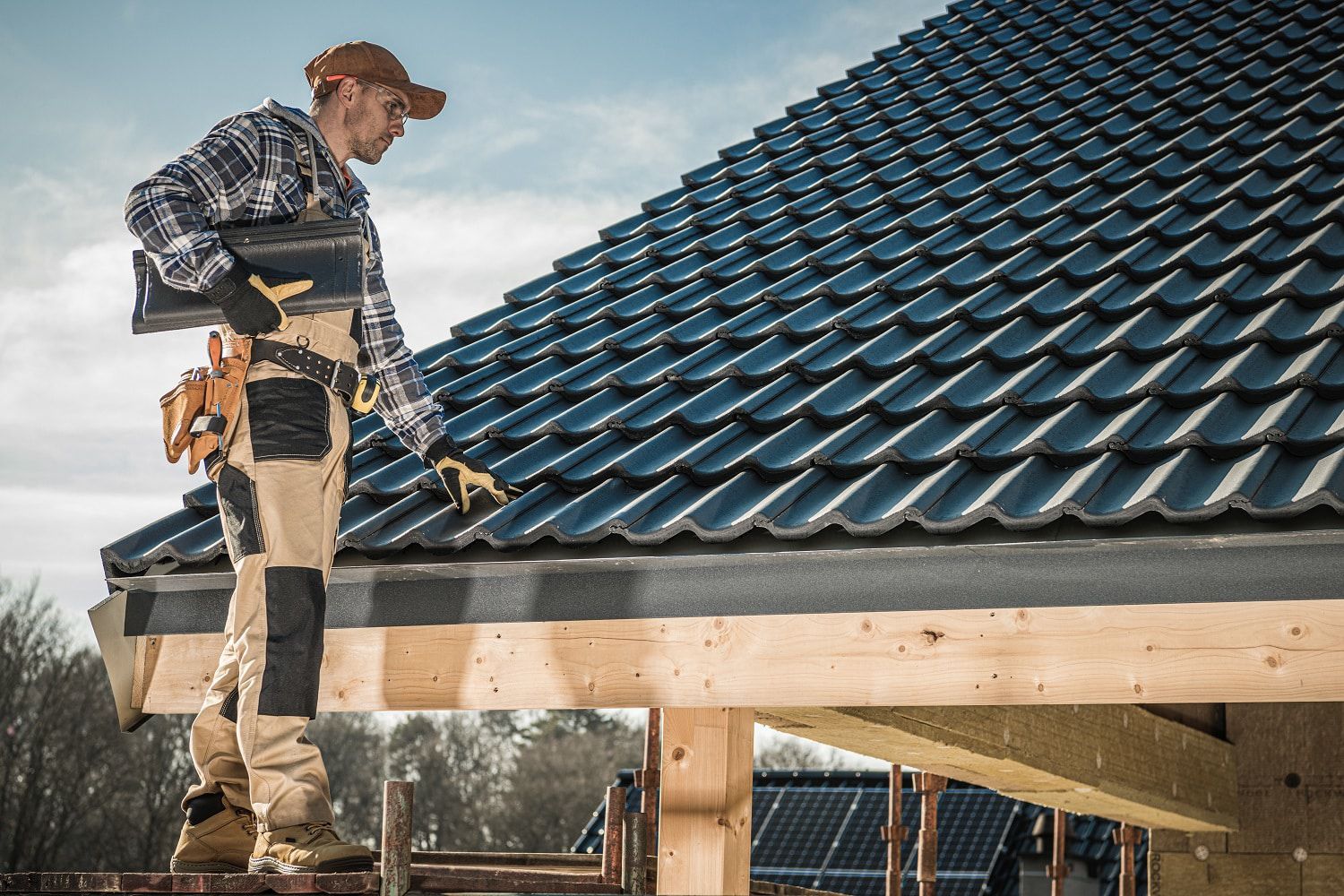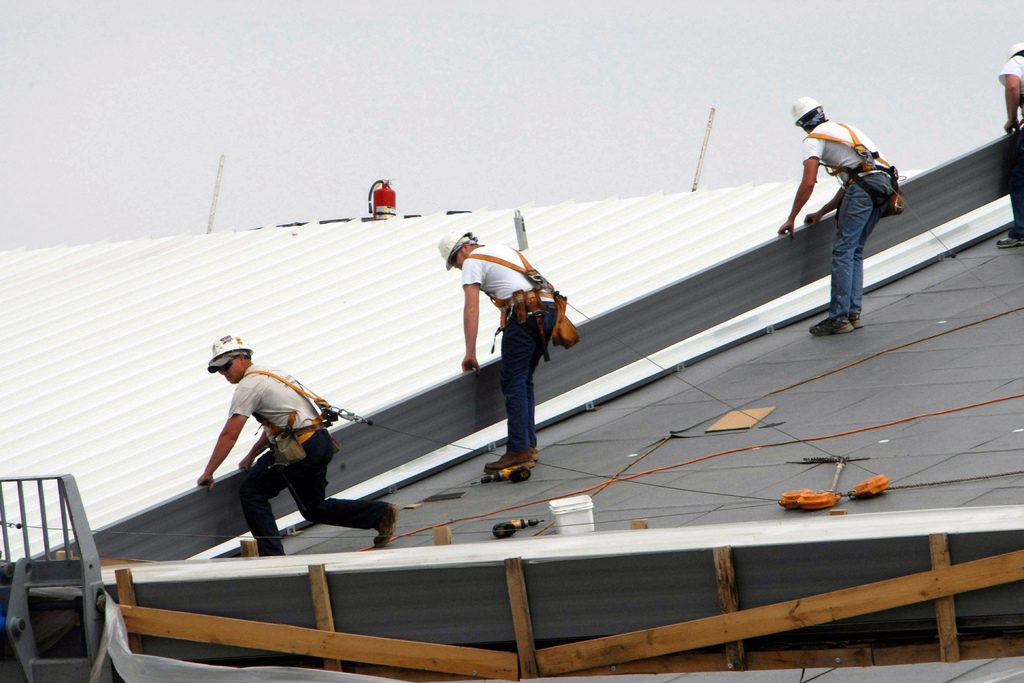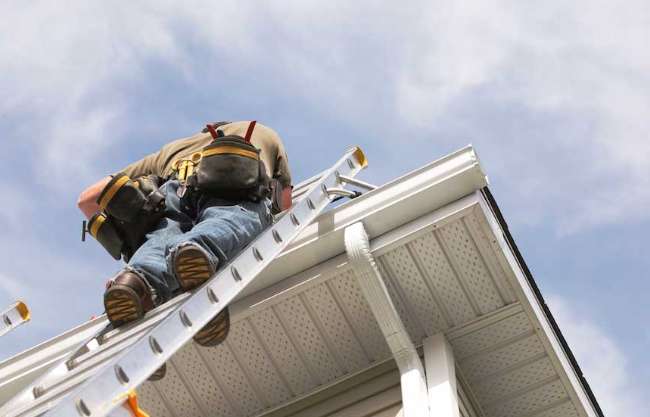Choose a trusted Roofer to ensure sturdy roofing solutions.
Choose a trusted Roofer to ensure sturdy roofing solutions.
Blog Article
Exactly How to Evaluate Various Roofing Choices for Your Structure Requirements
Examining roofing alternatives for your building requires an extensive strategy that considers different aspects such as the intended use of the framework, local environment problems, and product characteristics. It is important to weigh the advantages and drawbacks of various roofing kinds, from asphalt shingles to metal and clay tiles, while additionally factoring in first prices and lasting maintenance. Additionally, understanding energy efficiency and aesthetic allure can influence your choice. As you consider these considerations, one concern continues to be: which variables will eventually assist your choice for a lasting and aesthetically pleasing roof covering solution?
Evaluating Your Structure's Demands
To successfully assess roofing alternatives, start by thoroughly analyzing your structure's needs. Beginning by considering the structure's intended use, as various frameworks may require varying roofing specifications. As an example, household roofing systems usually prioritize appearances and insulation, while business buildings might concentrate on resilience and load-bearing ability.
Following, review the local climate problems that will certainly affect roof covering efficiency. Factors such as temperature level changes, rainfall degrees, and wind patterns can influence material choice and style. A roof that excels in a pleasant environment may not execute also in areas susceptible to hefty snowfall or extreme warmth.
Furthermore, evaluate the structural stability of your building. Guarantee that the existing framework can sustain the chosen roofing products, especially if considering larger options. It is also vital to assess any regional building regulations or guidelines that might dictate specific requirements for roof covering systems.

Contrasting Roof Covering Products
Once an extensive analysis of your building's needs has actually been finished, the next step includes comparing numerous roof products. Each material supplies distinct advantages and drawbacks, making it important to align your selection with your details demands and circumstances.
Asphalt tiles are commonly recognized for their affordability and ease of setup, making them a popular alternative for residential structures. On the various other hand, steel roofing, recognized for its durability and longevity, can stand up to rough weather conditions yet might feature a greater first investment.
Clay and concrete tiles give excellent thermal insulation and visual appeal, particularly for Mediterranean-style style, yet they call for an even more durable structural support because of their weight. Wood drinks deal a natural appearance and great insulation buildings but might require much more upkeep and are at risk to fire hazards.
Evaluating Price and Budget Plan
Assessing your roof covering options necessitates a cautious assessment of expense and spending plan considerations. The general allocate a roof project consists of a number of factors, including product expenses, labor expenses, maintenance, and potential long-term savings. It is essential to establish a clear budget plan prior to exploring certain roof materials, as this will certainly guide the decision-making procedure and aid you stay clear of overspending.
Begin by getting quotes from numerous service providers to recognize labor prices in your region. Guarantee that these estimates consist of all essential services, such as elimination of the old roofing, installation, and any kind of extra attributes, like insulation or air flow renovations - Perrysburg Roofer. Next off, analyze the expense of different roof covering materials, considering both initial installation prices and expected life expectancy

Comprehending Energy Efficiency
Power performance plays an important function in the selection of roofing materials and systems, significantly influencing both energy consumption and total comfort within a building. A well-chosen roofing can enhance thermal efficiency, lowering the demand for home heating and cooling systems, which subsequently decreases power costs and lessens ecological impact.
When reviewing roofing options, think about products that reflect rather than take in warm. Additionally, proper insulation and ventilation are necessary to maximize the energy effectiveness of the entire roofing system.
An additional important element is the roof system's longevity and maintenance requirements. Sturdy materials that call for less constant substitute contribute to long-lasting power financial savings. The energy effectiveness of a roofing system can additionally be analyzed through its compliance with recognized sustainability scores such as Power STAR or LEED.
Taking Into Consideration Visual Allure
A roof's visual appeal substantially influences the overall appearance of a building, enhancing its architectural style and boosting curb appeal. Sylvania Roofing Contractor. When evaluating roof choices, it is necessary to consider just how the picked product, color, and layout will certainly balance with the existing structure and neighborhood. A well-designed roof covering can raise even the simplest of structures, transforming them right into visual prime focus
Various roof materials provide various visual top qualities. Typical shingles might evoke a traditional beauty, while steel roof covering can give a contemporary, sleek look. Furthermore, the shade of the roofing product plays a crucial duty; lighter tones can make a structure appear even more spacious, while darker tones might produce a cozier ambiance.
In addition, building aspects, such as dormers and eaves, can boost the roofing system's aesthetic influence. It is a good idea to speak with expert developers or engineers to ensure the chosen roofing alternative aligns with the overall layout intent. Ultimately, a roof needs to not only supply useful benefits however also contribute positively to the structure's visual, mirroring the owner's preference and the character of the surrounding atmosphere.
Conclusion

Report this page